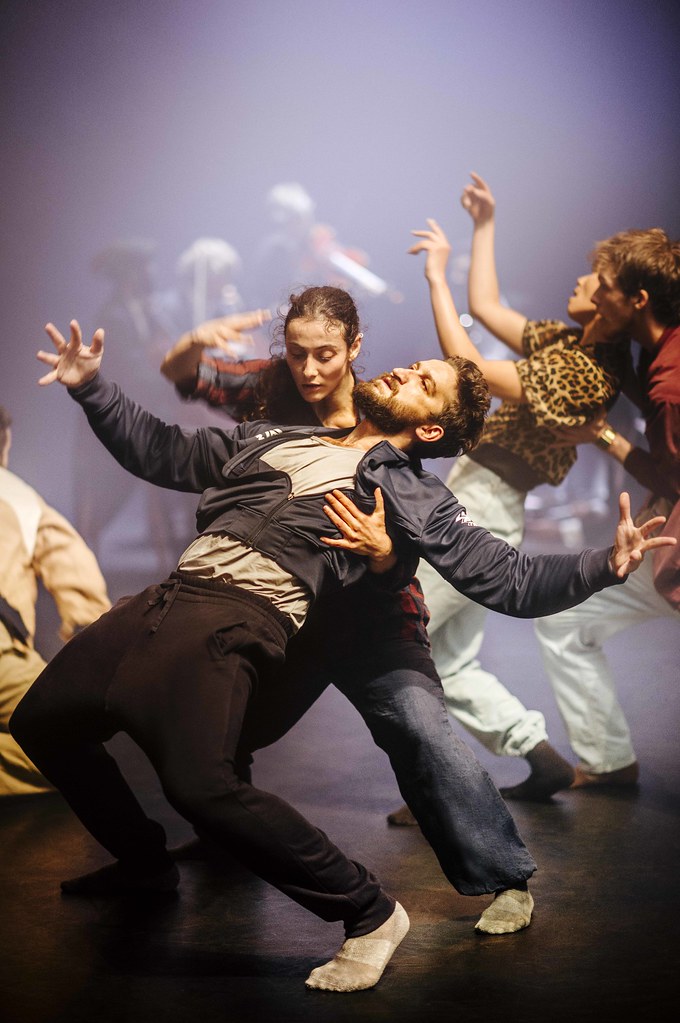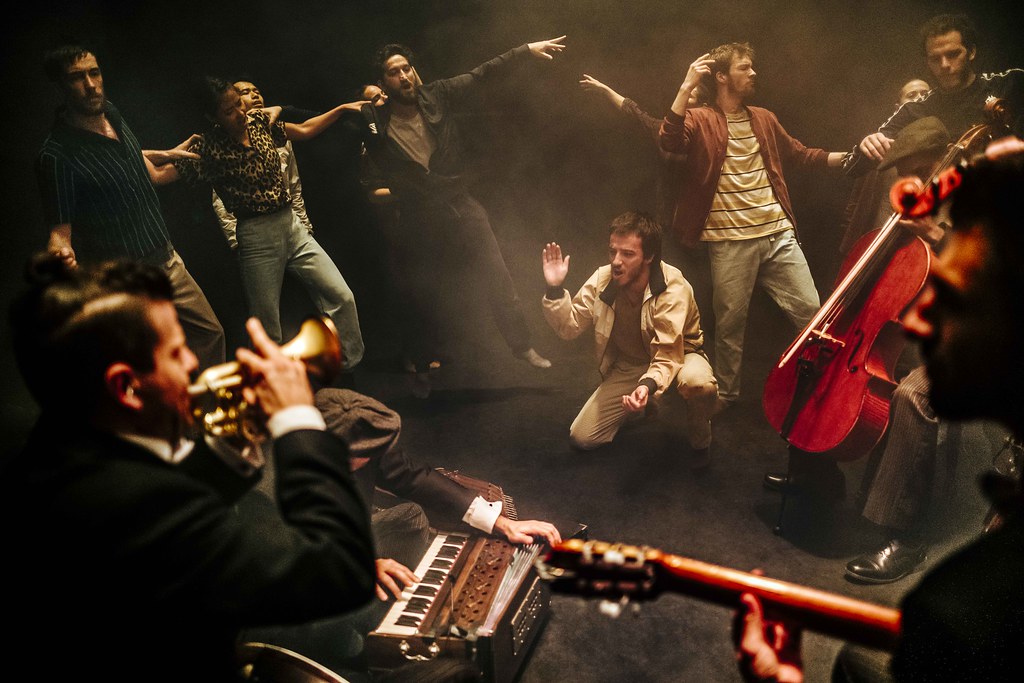True to the title, Hofesh Shechter delivers a cinematically loud and emotionally rallying spectacle. In his chosen title – Grand Finale – it seems to allude to a seminal work, a culmination of Uprising and Barbarians. The literal use of a term-as-title also wraps up familiar Shechter cynicism in its unembellished realness. Perhaps it also invites an exploration – whether earnest or cynical – of what it means in the world of performance, to really put on a show.
The opening image has a graveyard eeriness. Large tombstone like blocks- about ten metres tall – form the moveable stage-set. The stones block the spotlight, creating a dark, shadowy stage as what sounds like a prayer-chant is faded in. The dancers first movements are fast and sharp, as a group they explode then come to a perfect, sudden stillness. Moving as one orbiting cluster.

The opening section is one of sobriety and loss. It has resonance with a refugee crisis and scenes of war as bodies turn limp and are dragged away by the other dancers. The costumes also connote this, as the dancers wear oversized and crumpled clothing. There are gestures of loss and desperation. The prayer chant grows louder and this colours gestures to the sky as spiritual gestures of faith and hope. They move in groups that are continually reforming and rebuilding, as one human encounter is lost or cut off. Like Shechter observes in the programme note: “things collapse and then we build them up again”.
Throughout the show, the stage is sculpted by the tall, black blocks. They create walls, divisions, intimate rooms and are scattered around the space and lit with a top-light to create shadows across the space. The imagery of a single body sat below one with a drooped head makes a dancer look vulnerable, helpless. Iconic movement motifs are carried too – the dancers assembled in a line holding a passe, jigging like a drunken man and the hunched back postures. Around the familiar Shechter movements, there are occasional military gimmicks – salutations and marches. Towards the latter half of the show, desperation seems to whip its way into a frenzied and united anger or liberation. The piece takes us on an emotional journey of regeneration – loss and grief, desperation, denial and finally anger. Shechter’s dancers doing best at communicating raw, barbarian emotion.
Against the powerful soundtrack, moments of intimacy are created with a small ensemble of live musicians, dressed in tailed-suits. Comparatively the soundtrack is cinematic and the communication feels universal in its scope, but the live music suddenly grounds us in the here and now of reality. It brings people together in a simple and human way.

Huddles of people with their backs to the audience has the effect of feeling that we are privy to a series of private moments, evoking intimacy between the performers. Last moments shared with loved ones in times of war and death.
Most apparent in this piece was the skill of Shechter’s composition. The entire piece had me as an audience member feeling a part of some cult ritual. Even with sharp juxtapositions, section by section blends seamlessly with growing intensity. The dancers uninhibited, frenzied movements cultivate the feeling that we are witnessing some kind of spiritual ceremony. On this point, the music and choreography go hand in hand, each feeding the other with a growing guttural power. At no point did I feel restless for a section to move on, or like something didn’t have enough time to settle. Aided by the modestly sized theatre, I felt every fibre engaged from start to finish.
Grand Finale is truly a piece to move audiences with universal truths of a turbulent political world. It is the right balance of dark and light, humour and humanity. Dancers and musicians should feel proud – and exhausted – of their emotional and physical commitment to the hour and a half long piece.
Reviewed on 22nd of May at Home Theatre


